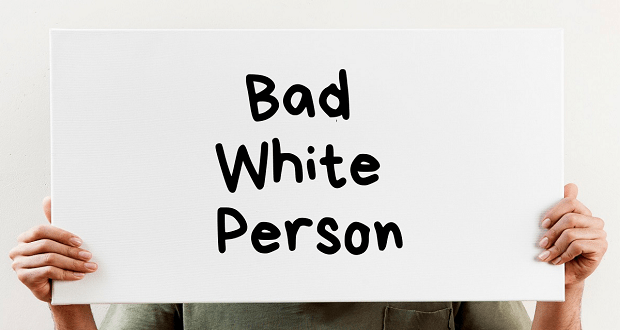Just over a year ago, I recall a client explaining succinctly who would be attending our learning session on anti-Black racism: “It’s an A, B, C audience – Allies, Black folks, and those who are largely Clueless.” At the time, I remember puzzling over how to best design a learning experience on this topic that could resonate with each of these distinct groups. Today, this has become a daily challenge.
A year after George Floyd’s murder — when individuals and organizations alike committed themselves to antiracism — we have, in many organizations, watched this work backslide as it inevitably got challenging or “messy,” and momentum waned.
At the same time, we have yet to emerge from a global pandemic, police murders of BIPOC have felt unrelenting, and we have seen the rise of hate crimes against Asian communities. This year has been exhausting for everyone, but that burden has not been borne equally.
As we have introduced justice-focused and antiracism learning in organizations across many sectors, we have lost count of the thousands of stories we’ve heard from BIPOC employees of the ways they have been harmed in their organizations. In the last year particularly, a common refrain has risen to the surface: “It is not my responsibility to educate my white colleagues about my experiences with racism.”
In the last year particularly, a common refrain has risen to the surface: 'It is not my responsibility to educate my white colleagues about my experiences with racism.' Click To TweetAs millions of white people began this year to reckon with the realization that racism is still very much alive — and that they had been blissfully ignorant of this fact — they began seeking to remedy this. Many turned to antiracist book lists or documentaries. For some, their employers contracted learning experiences following George Floyd’s murder. Still others turned to another source of information: people of color in their lives. While their intent was positive — an effort to understand the race-based injustices that play out across our society and institutions — many did not recognize the impact; for those who live these experiences daily, and therefore experience associated burden and fatigue, this “ask” by people who benefit from the same systems that harm people of color may be anything but benign.
Further compounding this issue is the fact that, by and large, organizations approach training with a “one size fits all” approach: learning is contracted for all staff. This is one thing when the learning topics consist of new policies or general skill-building, and quite another when the topics are, like antiracism, deeply connected to the lived experiences of some folks in the room, and largely abstract or unfamiliar to others. Increasingly, we have begun to question the efficacy of “ABC” audiences, recognizing that these groups each have distinct needs. At times, grouping them all into one cohort has the potential to not only fall flat but to cause real harm. A comment from a recent session illustrated this clearly:
'As a Black person I find it triggering to be in these meetings. I'm not learning anything new and find it emotionally taxing hearing my non-Black colleagues’ thoughts and feelings on the matter.' Click To Tweet“As a Black person I find it triggering to be in these meetings. I’m not learning anything new and find it emotionally taxing hearing my non-Black colleagues’ thoughts and feelings on the matter.”
These sentiments have become increasingly common in comments shared in session or afterwards in session evaluations. As practitioners, we are working through how best to handle these challenges in real time, and we do not have all the answers. However, we must commit ourselves to thinking through them and seeking ways to minimize harm. This is precisely the “messiness” that has scared some organizations off from their initial commitments, so working through it is critical to progress. Here are a few practical considerations for minimizing harm and fatigue for your BIPOC employees as your organization continues on its antiracism journey:
Here are a few practical considerations for minimizing harm and fatigue for your BIPOC employees as your organization continues on its antiracism journey... Click To Tweet- Consider when it may be appropriate to differentiate learner audiences. Your white employees may need education about microaggressions or the history of racism. Your BIPOC employees may need opportunities for “safer space” to process and be in community with one another. These are two very critical – and very different – pieces of antiracism work. The demand for antiracism learning may require rethinking organizational training models significantly, and caucus groups are one practical approach.
- Be mindful of approaches to “listening sessions.” We have seen countless organizations host these sessions, which purportedly offer BIPOC employees the opportunity to voice challenges and hardships they have encountered. Yet when little or nothing is done in response, the question must be posed: who did this serve? Particularly if the main outcome of these sessions is white employees leaving humbled by the stories of pain that were shared, this quickly becomes invasive and tokenizing, in addition to the trauma and fatigue that BIPOC employees may experience when they share these very personal experiences.
- Do not assume you know what BIPOC folks in your organization need. Instead, center those most impacted and ask them directly. Many organizations, with good intent, have established new diversity councils and employee resource groups. However, these initiatives represent additional work that often falls disproportionately on BIPOC employees. Best practices include compensating those involved in these important efforts, but even before you get to this point, ensure that the initiatives you are sponsoring resonate with those personally impacted by racism in your organization. Perhaps what is most urgently needed is instead opportunity for rest and self-care — or something else entirely.
- Offer choices to those personally impacted by racism to opt out of potentially triggering content. This approach may look different depending on context but could include offering BIPOC employees the option to attend antiracism sessions or not – or to step away for specific parts of the session if they choose. This is a challenging balance to strike, knowing that organizations are made up of individuals, and introducing the same information to everyone can be valuable. However, recognizing lived experiences as valid sources of knowledge is essential to justice. Retraumatizing those who have personal experiences with racism in the name of “consistency” will only erode trust and psychological safety.
Last year, the predominantly white faith organization in which I was raised hired its first woman of color into the position of Senior Minister. Members of the congregation proudly posted the news on social media and looked forward to meeting her. Less than a year later, she announced her resignation in a letter to the congregation, noting that she experiences the impact of racism daily, that this institution has a lot of work to do, and that “this is not my work.” She is right; the burden of addressing systemic racism should not fall on those who are most harmed by this unjust system. As many organizations work through similar challenges, it is critical that we not minimize differences in people’s needs and boundaries as it relates to this work.
The burden of addressing systemic racism shouldnt fall on those most harmed by the unjust system. As many orgs work through these challenges, it's critical that we not minimize differences in ppl's needs & boundaries. Click To Tweet



















